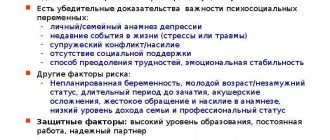Vegetovascular dystonia (or VSD for short) is a psychosomatic problem in which the functioning of the autonomic system, which is responsible for balance in the body, is disrupted. At the same time, the circulatory system “fails”, blood pressure and vascular tone decrease - therefore, all organs receive the necessary substances in smaller quantities than required. This leads to disastrous consequences, such as blood stagnation, brain hypoxia, and decreased organ activity. One of the varieties of this disorder is VSD of the hypotonic type. It is characterized by disruption of the cardiovascular system, decreased blood pressure, and decreased blood flow to all organs.
Young people who lead a sedentary lifestyle are more often susceptible to VSD of the hypotonic type. But this type of vegetative-vascular dystonia can also affect the older generation.
Types of vegetative-vascular dystonia (VSD)
Depending on how the cardiovascular system reacts to a disorder of the autonomic nervous system, 4 types of VSD are conventionally distinguished: hypertensive, hypotonic, cardiac and mixed. A more detailed study of the signs of vegetative-vascular dystonia made it possible to identify 3 more types of disorder: vagotonia, cerebral-type VSD and somatoform dysfunction.
This typology is outdated, however, it allows you to classify all symptoms of VSD. The problem of diagnosing autonomic dysfunction is acute, and patients often become victims of ignorance or inattention of doctors. Let's figure out what symptoms may indicate the presence of one or another form of autonomic dysfunction.
Treatment for Nervous Imbalance
Treatment of dystonia should be aimed at all the causes of the disease, as well as its main symptoms. Since each case of the disease is unique, treatment should also be strictly individual, but its general directions can be identified.
The main methods of treating VSD:
- Fighting chronic infection.
- Sedatives (sedatives, tranquilizers, antidepressants).
- Vitamin therapy.
- Normalization of metabolic processes (treatment of diseases of the liver, kidneys, respiratory and digestive systems).
- Stimulants (preparations of eleutherococcus, ginseng, pantocrine).
- Psychotherapy.
- Acupuncture, acupressure.
- Physiotherapy.
- Elimination of external sources of intoxication (professional and domestic), combating bad habits.
- Dosed physical activity, swimming.
- Creating a favorable psycho-emotional environment at work and at home.
Vegetative-vascular dystonia, according to ICD-10 (the latest edition of the International Classification of Diseases), is called “dysfunction” or “complexes of symptoms.”
The vagueness of the criteria makes the treatment of vegetative-vascular dystonia a difficult task, which should only be addressed by a specialist. Unprofessional treatment carried out independently using folk remedies is likely to be ineffective and may worsen the patient’s condition.
VSD of cardiac type
In the cardiological (as well as in the hypertensive) form of autonomic dysfunction, the diagnosis will most likely show obvious sympathicotonia, that is, functional tension in the work of the sympathetic department of the ANS. A distinctive feature of VSD of the cardiac type is pain in the heart area (stabbing, pressing or burning sensations in the chest area). Signs may resemble those of an angina attack or myocardial infarction. But upon examination, cardiac pathologies are not detected.
The cardiac type of reaction to a vegetative-vascular disorder is characterized by: tachycardia, cardiac arrhythmia, false pain in the heart area, as well as respiratory arrhythmia and asthma attacks. It is important to understand that with VSD, pain in the heart area is not a harbinger of a heart attack and does not in any way affect the cardiovascular system, which will be confirmed by the patient’s echocardiogram. Cardiac rhythmography is very effective in diagnosing this type of VSD.
Diagnostics
Diagnosis is based on characteristic patient complaints and examination data. Usually, in addition to standard laboratory examinations, an ECG is taken at rest and during exercise, electroencephalography, radiography of the spine, and ultrasound of internal organs.
ECG is one of the diagnostic methods
The functional nature of the disease, which does not have clear manifestations, usually does not allow its specific signs to be detected during examination. The diagnosis takes into account the sum of many indirect signs.
Consultations with a neurologist and other doctors of related specialties are important for diagnosis.
VSD of mixed type
Depending on how the cardiovascular system reacts to a disorder of the autonomic nervous system, the 3 types of VSD described above are conventionally distinguished. But, as a rule, vegetative-vascular dystonia includes several types of symptoms at once.
The mixed type is characterized by a combination of the above symptoms. Blood pressure “jumps”, a person feels sometimes depressed, sometimes irritated, sometimes experiences weakness, sometimes excessive emotional overexcitation, and his mood changes sharply. With a mixed type of VSD, the whole spectrum of symptoms can manifest itself: cardiac and respiratory arrhythmia, panic attacks, pain with vague localization. This type of autonomic disorder is the most common.
How to determine the type of VSD?
Vegetative-vascular dystonia is one of the most difficult pathologies to diagnose and treat. What type of VSD do you have?
Symptoms of VSD may differ in different cases, and this is due to the fact that different types of dystonia can disrupt the functions of different systems.
There is no generally accepted classification system for vegetative-vascular dystonia today. Some of these systems are quite difficult to understand and are used only for scientific purposes. Most often, doctors use a classification where the main criterion is blood pressure parameters.
Cardiac type (normosthenic)
This type of VSD is characterized by normal blood pressure. The main symptoms are related to sensations in the heart and psychological reactions. The attacks are accompanied by a feeling of lack of air, palpitations, interruptions in heart function, a feeling of rhythm disturbances, panic, fear of death, and heart pain. Characteristic signs are weather dependence, headaches when overworked, adrenaline surges, and a tendency to depression.
VSD of hypotonic type
The main characteristic of the hypotensive type of VSD is pressure that is low relative to normal, as well as an even greater decrease during periods of attacks. Corresponding symptoms are dizziness, orthostatic collapse, poor tolerance to hunger, “hunger” headaches, pallor, cold feet and hands even in warm weather. A tendency to asthenia is often observed already in childhood. Characteristic psychological symptoms are a tendency towards hypochondria, increased anxiety.
VSD of the hypertensive type
Typically, these people's blood pressure is normal or slightly elevated. Physical activity, psychological stress, fatigue, the need for acclimatization, and alcohol intake can cause an increase in systolic pressure to values above 140 mmHg. In this case, there may be unpleasant, squeezing sensations in the area of the heart and chest, and a feeling of a squeezing hoop on the head. For a long time, no organic disorders that are characteristic of hypertension are observed.
What type of VSD might you have?
Each type of VSD is rare in isolation. Usually the cardiac type is combined with hypertensive or hypotensive. Over time, the hypotensive type can be replaced by a hypertensive one, with the transition to hypertension.
There are also other divisions, for example into syndromes, which indicate a leading system that determines the main group of symptoms. But for the treatment of VSD it is convenient to use the above classification.
Treatment of dystonia, depending on the type, differs in the recommended daily regimen and features of assistance during the period of severe symptoms. The main drug prescribed for all types of VSD is Eltacin® . This is a complex of three amino acids - cystine, glutamic acid and glycine - which activate cellular respiration and act directly on the cause of vegetative-vascular dystonia, regardless of its type.
Constant use of Eltacin® helps to normalize the condition of dystonia of any type.
VSD of vagotonic type
Vagotonia is characterized by a wide variety of symptoms, which can raise suspicion of serious diseases of the heart, endocrine or respiratory system, diseases of the gastrointestinal tract or even the psyche. A thorough examination does not reveal any pathologies in the organs and systems of the body. And as a “diagnosis of exclusion,” the patient is diagnosed with “VVD of the vagotonic type.” Indeed, a variety of symptoms that do not fit into a single pathological process are caused by vagotonia - hypertonicity of the vagus nerve (“vagus”). The vagus nerve regulates the activity of organs, glands and blood vessels, and an increase in its tone causes spasm of smooth muscles throughout all structures of the body.
With this type of VSD, the activity of the parasympathetic part of the nervous system predominates (over the sympathetic), which will be confirmed by the diagnosis of CRH. A person becomes apathetic, unsure of himself, suspicious, suffers from hypochondria, suspecting that he has the most terrible and, perhaps, still unknown disease. Memory for specific things often deteriorates: numbers, dates, details, and mental activity decreases.
Physical symptoms are bradycardia, hypotension, vestibular disorders (dizziness and fainting), fatigue, shortness of breath, pale skin, cold extremities, non-localized pain in the abdomen and chest. Despite the broken state, the person experiences difficulty falling asleep and does not sleep well during the night. In advanced cases, patients experience panic attacks, depression and suicidal tendencies. Symptoms can appear in a complex manner, or they can be localized - when complaints are limited to one of the organ systems. The disease can be chronic or manifest itself in the form of outbreaks, vegetative crises, when the condition sharply worsens. In vagotonic children, the pathology also manifests itself in an abundance of allergic reactions.
Why is harmony disrupted?
The autonomic nervous system operates independently of human consciousness and is engaged in extensive “economic” activities. It performs very important functions - it maintains the stability of the body’s structure, ensures the consistency of the work of internal organs and their “adjustment” to constantly changing external conditions.
At the same time, its sympathetic department, which can be called “daytime,” is responsible for activity, movement, physical activity, increases heart rate and increases blood pressure.
The parasympathetic department, the “nocturnal” one, is associated with rest, sleep, accumulation of strength and body weight. It causes a decrease in heart rate and blood pressure.
With VSD of the hypotonic type, the parasympathetic department predominates, which determines the main signs of the disease.
The main conductor of the “decisions” of the parasympathetic system into action is the vagus nerve (n. vagus, or simply vagus). It got its name due to the fact that it has endings in almost all internal organs (“wanders” through the space of the body). This is where the second name for hypotonic autonomic dysfunction comes from – “VVD of the vagotonic type.”
VSD of cerebral type
With vegetative-vascular dystonia of the cerebral type, the tone of the blood vessels in the brain is disturbed. The blood vessels spasm, which leads to disruption of blood supply and nutrition to the brain. Cells lack oxygen, and blood flow deteriorates.
The primary symptoms are headaches, dizziness, blurred vision, noise and pounding in the ears, and nausea. Other symptoms of VSD may also appear: pain in the heart, tachycardia, vascular instability (bouts of heat, sweating, pale skin), difficulty breathing, shortness of breath and a number of other symptoms. According to cardiac rhythmography data, VSD of the cerebral type will be expressed by hyperactivity of waves from the autonomic centers of the brain and, possibly, sympathetic waves.
Causes of imbalance
There is no single reason why vegetative-vascular dystonia of the hypotonic type occurs. We can name the main, most frequent, factors of its occurrence:
Alcohol intoxication is one of the causes of VSD
- Congenital structural features of the nerve centers (pituitary gland, hypothalamus, peripheral nervous structures), which lead to an imbalance of “control” and the constant predominance of one of its departments.
- Hormonal disorders of various nature (pregnancy, menopause, adolescence, endocrine diseases).
- Intoxication, which can be of an external or internal nature (exposure to industrial and household poisons, chronic infections, severe metabolic disorders due to pathology of the liver and kidneys). Other causes of intoxication are alcoholism, drug addiction, and smoking.
- Spinal diseases (osteochondrosis, spondyloarthrosis, herniated intervertebral discs, etc.).
- Psycho-emotional disorders, often arising under the influence of difficult experiences, stress, systematic overwork, and lack of sleep.
Somatoform dysfunction
With somatoform dysfunction, a person usually complains about a specific organ or group of organs that are regulated by the autonomic nervous system. These may be complaints about the cardiovascular, gastrointestinal, respiratory or genitourinary systems. The patient associates his condition with a physical disorder, but based on the results of the examination, the doctor finds no reason for it. The true cause of the malaise is a disruption in the functioning of the autonomic nerve centers. In addition to subjective localized pain, heaviness, burning or tension, specific symptoms of VSD can be easily identified among the patient’s complaints.
The variety of symptoms of autonomic dysfunction makes it difficult for the doctor to get to the root cause of the disease. Therefore, in addition to collecting anamnesis, it is important to conduct instrumental studies of the functioning of the autonomic nervous system. Find out more about diagnosing autonomic disorders.









